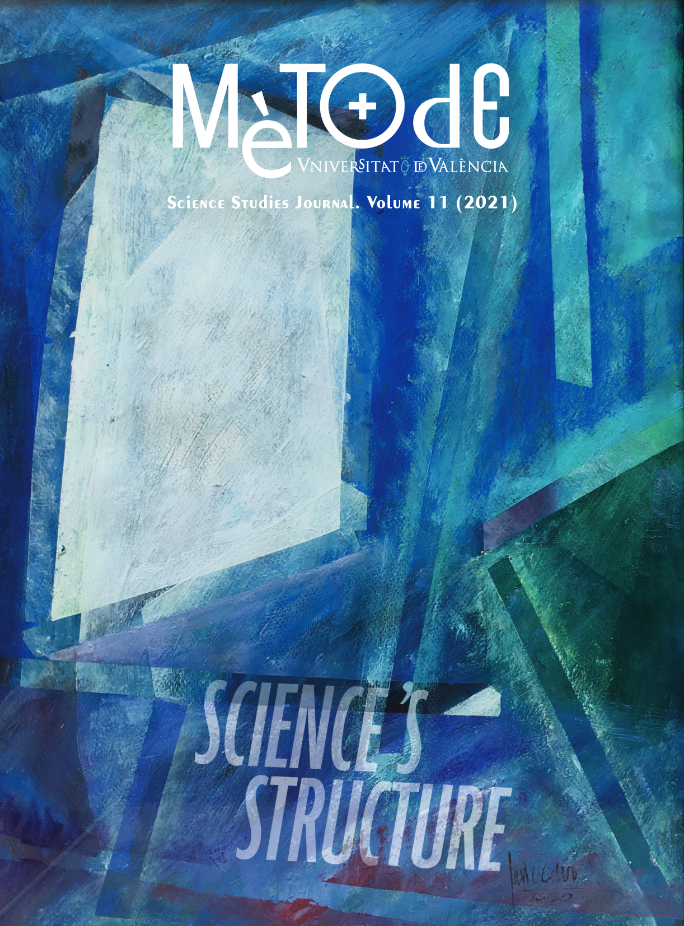Más allá del calentamiento global: Océanos estresados globalmente en el Antropoceno
DOI:
https://doi.org/10.7203/metode.11.16830Palabras clave:
Antropocè, escalfament, acidificació, desoxigenació, canvi global Resumen
Resumen
La huella de las actividades humanas sobre el planeta es tan profunda que muchos científicos ya sugieren que hemos entrado en una nueva época geológica, el Antropoceno. De entre estas actividades, las que vienen acompañadas de grandes emisiones de dióxido de carbono (CO2) afectan de una manera global a todo el planeta y, sobre todo, a los océanos. Estos, además de calentarse, se vuelven progresivamente más ácidos y menos oxigenados. En este artículo discutimos el alcance de estos estreses globales sobre los océanos después de contextualizar este desorbitado aumento antropogénico de CO2 y de ver cómo se distribuye. Acabamos con una discusión sobre posibilidades de mitigación a través de los propios océanos, recalcando la necesidad imperiosa y urgente de atacar el problema, sobre todo durante esta década que hemos empezado.
 Descargas
Descargas
 Citas
Citas
Alley, R. B. (2014). The two-mile time machine: Ice cores, abrupt climate change, and our future (Updated Edition). Princeton University Press.
Delmas, R. J., Ascencio, J.-M., & Legrand, M. (1980). Polar ice evidence that atmospheric CO2 20,000 yr BP was 50 % of present. Nature, 284, 155–157. https://doi.org/10.1038/284155a0
Friedlingstein, P., Jones, M. W., O’Sullivan, M., Andrew, R. M., Hauck, J., Peters, G. P., Peters, W., Pongratz, J., Sitch, S., Le Quéré, C., Bakker, D. C. E., Canadell, J. G., Ciais, P., Jackson, R. B., Anthoni, P., Barbero, L., Bastos, A., Bastrikov, V., Becker, M., … Zaehle, S. (2019). Global carbon budget 2019. Earth System Science Data, 11, 1783–1838. https://doi.org/10.5194/essd-11-1783-2019
Fuss, S., Canadell, J. G., Peters, G. P., Tavoni, M., Andrew, R. M., Ciais, P., Jackson, R. B., Jones, C. D., Kraxner, F., Nakicenovic, N., Le Quéré, C., Raupach, M. R., Sharifi, A., Smith, P., & Yamagata, Y. (2014). Betting on negative emissions. Nature Climate Change, 4, 850–853. https://doi.org/10.1038/nclimate2392
GBRMPA. (2017). Final report: 2016 coral bleaching event on the Great Barrier Reef. GBRMPA (Great Barrier Reef Marine Park Authority). http://elibrary.gbrmpa.gov.au/jspui/bitstream/11017/3206/1/Final-report-2016-coral-bleaching-GBR.pdf
Global Carbon Project. (2019). Global carbon budget 2019. https://www.globalcarbonproject.org/carbonbudget/19/files/GCP_CarbonBudget_2019.pdf
Gruber, N. (2011). Warming up, turning sour, losing breath: Ocean biogeochemistry under global change. Philosophical Transactions of the Royal Society A: Mathematical, Physical and Engineering Sciences, 369(1943), 1980–1996. https://doi.org/10.1098/rsta.2011.0003
Hoegh-Guldberg, O. (Coord.). (2019). The ocean as a solution to climate change: Five opportunities for action. World Resources Institute. https://www.ourdynamicplanet.com/wp-content/uploads/2019/09/HLP_Ocean_Solution_Climate_Change.pdf
Höhne, N., den Elzen, M., Rogelj, J., Metz, B., Fransen, T., Kuramochi, T., Olhoff, A., Alcamo, J., Winkler, H., Fu, S., Schaeffer, M., Schaeffer, R., Peters, G. P., Maxwell, S., & Dubash, N. K. (2020). Emissions: World has four times the work or one-third of the time. Nature, 579, 25–28. https://doi.org/10.1038/d41586-020-00571-x
IPCC. (2018). Global Warming of 1.5 °C. An IPCC Special Report on the impacts of global warming of 1.5 ℃ above pre-industrial levels and related global greenhouse gas emission pathways, in the context of strengthening the global response to the threat of climate change, sustainable development, and efforts to eradicate poverty. V. Masson-Delmotte, P. Zhai, H.-O. Pörtner, D. Roberts, J. Skea, P.R. Shukla, ... T. Waterfield (Eds.). IPCC. https://www.ipcc.ch/site/assets/uploads/sites/2/2019/06/SR15_Full_Report_High_Res.pdf
IPCC. (2019). IPCC special report on the ocean and cryosphere in a changing climate. H.-O. Pörtner, D. C. Roberts, V. Masson-Delmotte, P. Zhai, M. Tignor, E. Poloczanska, ... N. M. Weyer (Eds.). https://www.ipcc.ch/site/assets/uploads/sites/3/2019/12/SROCC_FullReport_FINAL.pdf
Lüthi, D., Le Floch, M., Bereiter, B., Blunier, T., Barnola, J.-M., Siegenthaler, U., Raynaud, D., Jouzel, J., Fischer, H., Kawamura, K., & Stocker, T. F. (2008). High-resolution carbon dioxide concentration record 650,000-800,000 years before present. Nature, 453, 379–382. https://doi.org/10.1038/nature06949
Machado, L., Magnusson, M., Paul, N. A., Kinley, R., de Nys, R., & Tomkins, N. (2016). Dose-response effects of Asparagopsis taxiformis and Oedogonium sp. on in vitro fermentation and methane production. Journal of Applied Phycology, 28, 1443–1452. https://doi.org/10.1007/s10811-015-0639-9
Mcleod, E., Chmura, G. L., Bouillon, S., Salm, R., Björk, M., Duarte, C. M., Lovelock, C. E., Schlesinger, W. H., & Silliman, B. R. (2011). A blueprint for blue carbon: Toward an improved understanding of the role of vegetated coastal habitats in sequestering CO2. Frontiers in Ecology and the Environment, 9(10), 552–560. https://doi.org/10.1890/110004
Pelejero, C., Calvo, E., & Hoegh-Guldberg, O. (2010). Paleo-perspectives on ocean acidification. Trends in Ecology & Evolution, 25(6), 332–344. https://doi.org/10.1016/j.tree.2010.02.002
Schmidtko, S., Stramma, L., & Visbeck, M. (2017). Decline in global oceanic oxygen content during the past five decades. Nature, 542, 335–339. https://doi.org/10.1038/nature21399
United Nations Environment Programme. (2019). Emissions gap report 2019. UNEP.
Yan, Y., Bender, M. L., Brook, E. J., Clifford, H. M., Kemeny, P. C., Kurbatov, A. V., Mackay, S., Mayewski, P. A., Ng, J., Severinghaus, J. P., & Higgins, J. A. (2019). Two-million-year-old snapshots of atmospheric gases from Antarctic ice. Nature, 574, 663–666. https://doi.org/10.1038/s41586-019-1692-3
Descargas
Publicado
Cómo citar
-
Resumen974
-
PDF 441
Número
Sección
Licencia
Derechos de autor 2023 CC BY SA

Esta obra está bajo una licencia internacional Creative Commons Atribución-CompartirIgual 4.0.
![]()
Todos los documentos incluidos en OJS son de acceso libre y propiedad de sus autores.
Los autores que publican en esta revista están de acuerdo con los siguientes términos:
- Los autores conservan los derechos de autor y garantizan a Metode Science Studies Journal el derecho a la primera publicación del trabajo, licenciado bajo una licencia de Creative Commons Reconocimiento-NoComercial-SinObraDerivada 4.0 Internacional, que permite a otros compartir el trabajo con un reconocimiento de la autoría del trabajo y citando la publicación inicial en esta revista.
- Se permite y se anima a los autores a difundir sus trabajos electrónicamente a través de páginas personales e institucionales (repositorios institucionales, páginas web personales o perfiles a redes profesionales o académicas) una vez publicado el trabajo.





